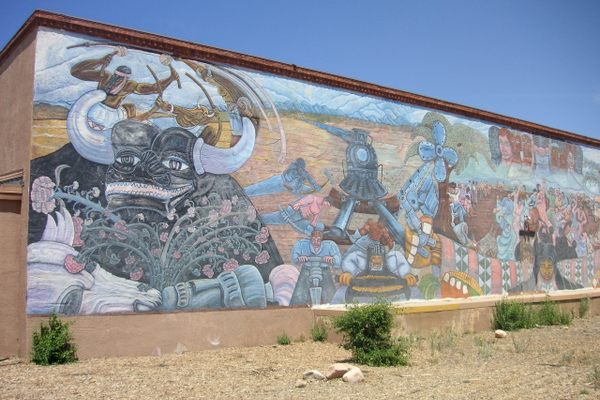The New Zealand Man Who Took a Parking Problem Into His Own Hands
Followed by a brief, selective history of traffic vigilantism.
Russell Taylor lives in Wellington, the capital of New Zealand. In the 1990s, he first began to notice a problem among the hilly jumble of winding side streets and blind corners in his neighborhood. If cars are parked on both sides of the street, he observed, emergency vehicles simply can’t get through. Taylor mustered his fighting spirit and a can of yellow spray paint and put some clumsy, irregular lines down along the edge of Holloway Road to prevent parking there. And he’s kept them there for two decades.
“The council won’t do anything,” he said. Wellington City Council told stuff.co.nz they are aware of Taylor’s homespun parking lines, which they call a “fake traffic device.”
But Taylor’s one-man crusade is also about fighting the forces of gentrification, he told the BBC. When he moved to the street in 1979, hardly anyone had had a car. “Now,” he said, “it has all changed as the area has become more middle-class and gentrified.”
Taylor is a particularly long-tenured example of a deep tradition of traffic signage vigilantism. Earlier this year, an Omaha group called PSA (“Plungers for a Safer Aksarben”) installed 120 standard toilet plungers along the edge of the bike lane of an especially dangerous street. After just three hours, city officials had plucked them from the street.
Group glues 120 toilet plungers onto Omaha street to show what a protected bike lane could do https://t.co/5XHamPfqwC pic.twitter.com/sxr5d31HIU
— Omaha World-Herald (@OWHnews) May 17, 2017
Other militant cyclists have gone further. New York’s “street justice activists,” who go by Right of Way, made headlines in 2013 when they painted a brand new cycle lane onto Manhattan’s Avenue of the Americas after a near-fatal accident involving a cab driving on the sidewalk. For the last 21 years, they’ve also stenciled in “street memorials” for pedestrians or cyclists killed by drivers. Similar DIY cycle lanes have also appeared in the dead of night in Los Angeles.
In the United Kingdom, a former Royal Marine, Donald Ligertwood, drove his neighbors around the bend after he began issuing homemade parking tickets, instructing parkers to “READ YOUR HIGHWAY CODE” and threatening to call the police. His guerrilla public service proved deeply unpopular with other local residents, who fumed to The Sun that he even painted a large box on the side of the road to prevent people from parking across from his driveway.
More popular, however, was a fake freeway sign in Los Angeles. On August 5, 2001, in broad daylight, artist Richard Ankrom hoisted a ladder up to a green highway sign and installed his own modification to help drivers onto a poorly marked hairpin exit. He even pre-dusted his addition with “smog-sheen” so it wouldn’t stick out. Eventually, the sign was removed during scheduled maintenance, but the city took his advice, and replaced the whole thing with a new sign that includes his suggestion.
Taylor’s parking lines may prove similarly successful. While the council plans to remove his illegal markings, they’ve planned a formal consultation on the road for later this year. Sometimes traffic vigilantes are onto something.









Follow us on Twitter to get the latest on the world's hidden wonders.
Like us on Facebook to get the latest on the world's hidden wonders.
Follow us on Twitter Like us on Facebook